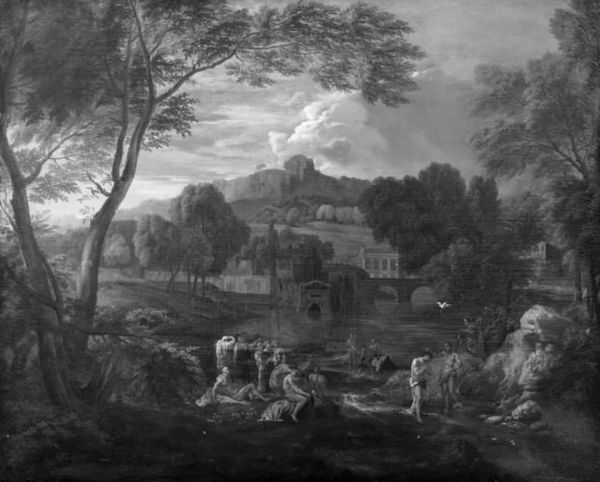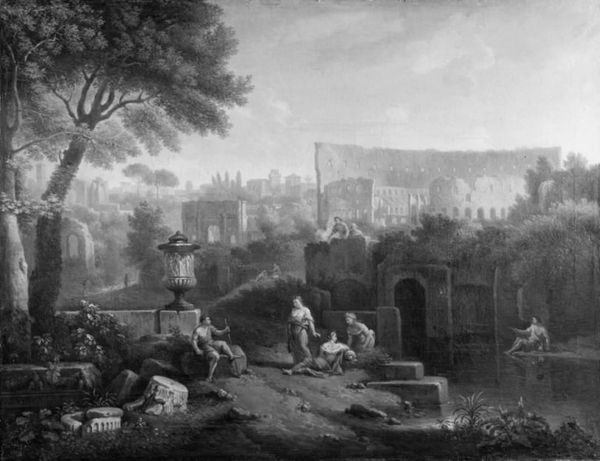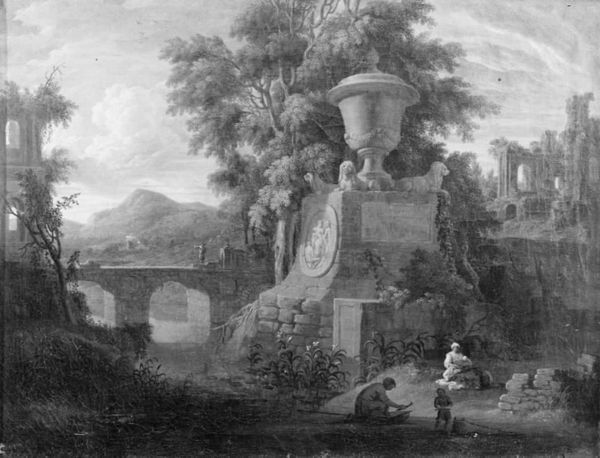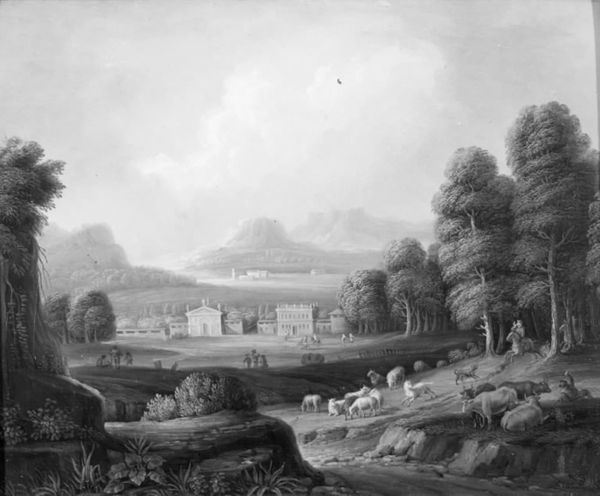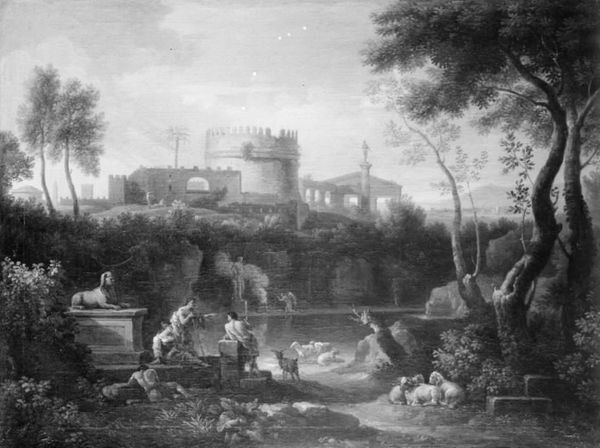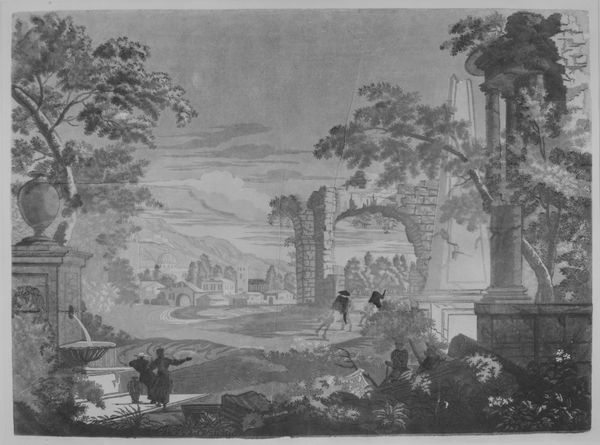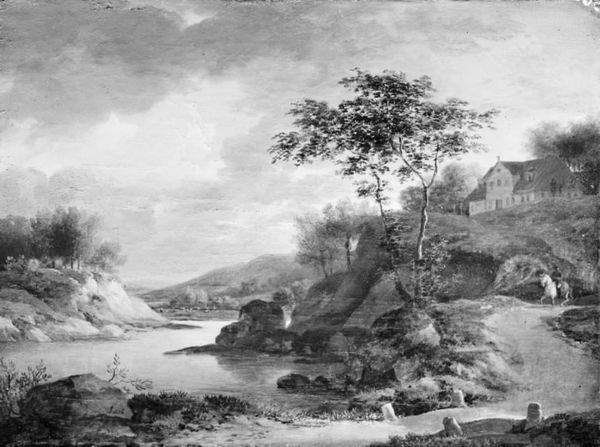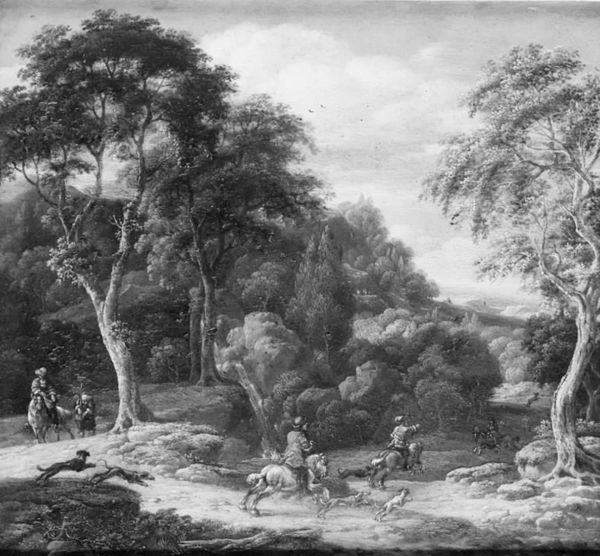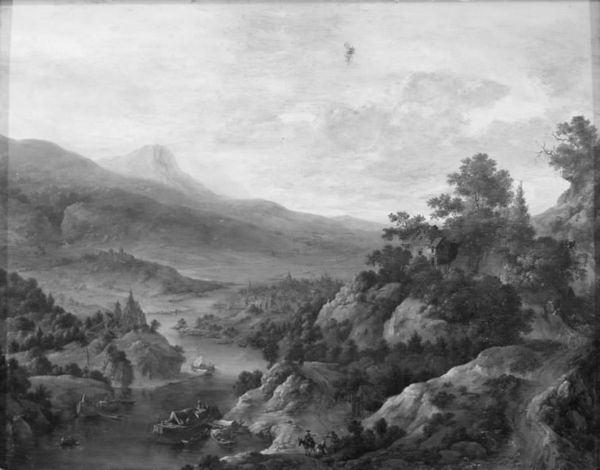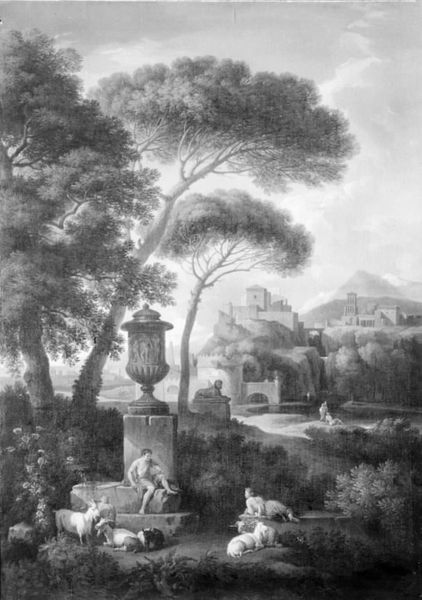
Roman Landscape with the Tiber and the Casino Belvedere 1735 - 1749
0:00
0:00
painting, canvas
#
solitude
#
baroque
#
abandoned
#
painting
#
countryside
#
landscape
#
eerie mood
#
rural
#
canvas
#
figure in landscape
#
fog
#
genre-painting
#
history-painting
#
realism
#
ruin
#
mist
#
shadow overcast
Dimensions: 122.5 cm (height) x 172.5 cm (width) (Netto)
Editor: We’re looking at "Roman Landscape with the Tiber and the Casino Belvedere" painted between 1735 and 1749 by Jan Frans van Bloemen. It's an oil on canvas, and it’s giving me a melancholic, almost eerie feeling, even with the classical architecture and people in the landscape. What do you see in this piece? Curator: I see a reflection of power and the shifting dynamics of labor in 18th-century Rome. Bloemen, though Flemish, spent much of his career in Rome catering to Grand Tourists who wanted picturesque souvenirs. But let's look closer: who populates this landscape? Where is the locus of labor? And, importantly, for whom? Editor: So, you're saying it’s not just a pretty picture of the Italian countryside? Curator: Not at all. Notice the subtle contrast. The Belvedere, a symbol of papal authority and wealth, looms in the background. In the foreground, we see ordinary people—perhaps agricultural workers or laundresses by the river. The "abandoned" figures suggest themes of labor and the distribution of resources. These elements are never neutral; instead, they serve a cultural commentary on the existing system. Can we read the workers presence as complicit to, or oppositional against, the prevailing socio-political norms? Editor: It's easy to overlook those figures when the architecture dominates the canvas. The architecture becomes the subject rather than the work done for its production. It’s fascinating to think about the social dynamics encoded within this seemingly idyllic landscape. Curator: Exactly. It compels us to ask who has the privilege of leisure and who bears the burden of labor? Consider the landscape itself. Is this a scene of harmony, or does the fog and mist you notice suggest a tension between the ruling class and the people eking out a life under its shadow? Editor: That gives me a lot to think about – this picture isn't simply a view, it's a statement. Curator: Yes, art can reveal hidden dynamics of society, culture, and historical experience! Hopefully this nuanced vision can inform future art evaluations.
Comments
No comments
Be the first to comment and join the conversation on the ultimate creative platform.
